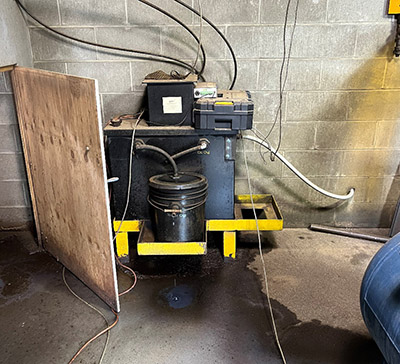
A lumber processor installed a remote lubricant-injected rotary screw compressor in an outbuilding to supply compressed air to a debarking system out in the yard. Lubricant injected air compressors normally pass some compressor oil into the system — usually about 4 parts per million for a well-maintained compressor — even though there is an air/oil separator installed within to prevent oil bypass.
Whenever compressed air is produced, the air at output of the compressor is 100% saturated, because the reduction in air volume, and reduction in temperature at the compressor cooler squeezes and condenses out the water vapor from the inlet air. The condensate, which always contains some compressor lubricant, is a pollutant that must be disposed of responsibly. A 1,000-cfm rated air compressor can easily produce 100 gallons of water per day in hot summer conditions.
The corporate environmental directives at this site outlawed the disposal of the compressed air condensate to the sewer system, due to the inherent lubricant content. For this reason, the site maintenance staff installed a water/oil separator to remove the floating lubricant from the condensate. This was set up in the corner of the building with the condensate drains from the compressor’s water separator and wet receiver discharging condensed water into this device.
Unfortunately, something was forgotten: the separator system only has limited volume and quickly became full, so a 5-gallon pail was positioned at the discharge of the separator system. This worked quite well in winter, when limited condensate forms due to the cold temperatures and low relative humidity, but as the weather warmed up the pail quickly filled. This poor installation allowed oily discharge to spill out onto the floor, making a huge mess — and worse, and the flow leaked out of the building onto the ground outside, polluting the soil. The Environmental Compliance Officer was not happy.
See a video of this situation here.
Efforts are ongoing to provide a proper storage vessel for the compressor condensate so it can be collected for proper disposal. When installing these devices be sure to give some thought to worst-case volumes of condensate and how to correctly collect it for disposal.
Filed Under: Components Oil Coolers, Compressed Air Technologies, Pneumatic Tips